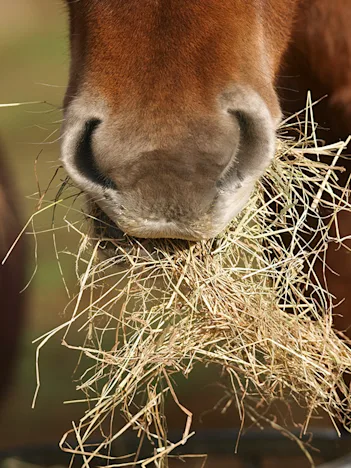Close
Our Products
All Products
Pleasure
Performance
Conditioning
Fibre
Breeding & Stud
Racing
Specialty
Supplements
Quick Feed finder
Free Diet Analysis
The Complete Range
Nutrition Centre
Articles
All About Fibre
Feeding for Condition
Competition Season
Laminitis
Breeding
Foal care
Building Topline
Gut Health
Senior horses
Racing & Breeding
Feeding in a Drought
Tools & Calculators
Competitions / Offers
Our Riders
Brand ambassadors
Junior Squad
About Barastoc
Why Barastoc
Our commitment
Barastoc's People
Our communities
Partnering with KER
Partnering with BHF
Sustainability
Find a Stockist
Contact Us

Feeding horses with Equine Metabolic Syndrome (EMS)
Feeding horses diagnosed with Equine Metabolic Syndrome (EMS) and/or laminitis can be daunting for a horse owner. Weight management and control of insulin levels are two important ways to help maximize quality of life and longevity in horses with laminitis associated with EMS. Horses with EMS are usually described as "easy keepers" that gain or maintain weight with very little feed. EMS is believed to be an abnormal adaptation of fat storage, this is why many EMS horses have visible abnormal fat deposits including cresty necks, fat around the tail head, and fat pads around the shoulder, sheath, or udder.
Under normal circumstances fat storage prepares horses for times when food will be scarce. However, fat acts as much more than an energy-storage tissue; it stimulates inflammation and affects insulin metabolism. One important role of insulin is to help drive glucose into cells, where it is used or stored for energy. Normally, insulin encourages blood vessels to relax and dilate, which improves blood flow. Recent research has shown that high concentrations of insulin, as occurs in EMS, can actually do the opposite, constricting blood vessels and reducing blood flow. Laminitis often occurs with lush pasture growth during late spring and early summer, when pastures have high sugar content (nonstructural carbohydrates).
Dietary management of EMS is critical. Affected horses also have insulin resistance, a disorder similar to type 2 diabetes in humans. Perhaps the most serious and potentially fatal clinical sign of EMS is laminitis that occurs spontaneously without any of the other risk factors that can normally result in laminitis. Owners of affected horses often do not realize they are killing their horses with kindness unless they remove and replace calories and starches/sugars in grain with a low calorie alternative like Barastoc Stud Balancer. Replace hard feeds with a low starch ration balancer pellet such as Stud Balancer as its low starch formulation is beneficial for controlling high insulin levels and the low calorie content enables weight loss.
Quick-growing early-season grasses often cause significant problems for EMS horses, including signs of laminitis. For this reason, when pastures are growing rapidly, it is wise to limit turnout, use a grazing muzzle, or put the horse in a yard. Some EMS horses cannot tolerate unrestricted access to pasture at any time of the year and others need to be kept off pasture until insulin sensitivity improves. When offering hay fed at 1- 1.25% of bodyweight per day using late-maturity or soaked hay as it has a lower sugar and energy content.
While forage supplies adequate energy for these horses to maintain weight, not all of the other nutrient requirements are being met. Stud Balancer is fully fortified to meet a horse’s daily nutritional requirements at a low intake so it can complement forage to meet all the protein, vitamin, and mineral needs of the horse without adding excessive calories or starch to the diet. BARASTOC Stud Balancer is designed for weight loss management making it ideal for EMS horses prone to laminitis.